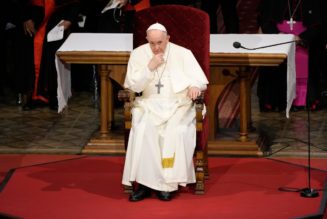For a lot of U.S. Catholics, the National Eucharistic Congress this July was a milestone event — a national moment for the Church, which, for many, far exceeded their expectations.
Tim Glemkowski, the lay man who led the Eucharistic Congress team, has faced a lot of questions since the Congress ended. But most of them boil down to just one idea: Why did the National Eucharistic Congress work?
Glemkowski gets some version of that question just about every day.
To answer it for The Pillar, Glemkowski put pen to paper, for a thorough look at what made the National Eucharistic Congress a different kind of Catholic gathering.
Glemkowski’s initial reflections on that one question — Why did the Eucharistic Congress work — have been edited for length and clarity, but are published mostly in their entirety, below:
—
Extraordinary movement of God
Just over a month ago, in Lucas Oil Stadium in Indianapolis, I was witness — along with many thousands of Catholics — to an extraordinary movement of God.
Over the last several weeks, I have read many of the beautiful reflections from attendees at the Congress. I have delighted in seeing how they have come from across the Catholic ideological and demographic spectrum in the Church.
These are a particular comfort to me. In spring 2022, I was invited to the role of executive director — then CEO as we grew — of the National Eucharistic Congress.
The organization was launched as a sort of “speed boat” from the oil tanker of the Church, to scrappily organize and underwrite this summer’s events: the 10th National Eucharistic Congress, the first National Eucharistic Pilgrimage, and, additionally, to spread the grassroots movement of Eucharistic Revival broadly into parishes, schools, and families.
As I shared in an address on Saturday night in the stadium, for much of the work of the 28 months leading to Indianapolis, the outcome was far from certain.
The Congress team persevered largely in the belief that God invited his Church to something special. But it was not until the launch of the pilgrimage in May that we began to see possible indications that this faith was correctly placed.
Having now witnessed the tangible proof of that conviction, I have been asked to give a few talks on the Congress, and so I have been reflecting on what created the pre-conditions for such a movement of God.
I think it’s important to capture those lessons. Recently, I have seen and heard of many conversations, in dioceses, apostolates, religious orders, etc. on how to replicate the “success” of the Congress. That is overall a good thing; the Congress was supposed to be a bellwether of Eucharistic Revival in the Church, not its culmination.
But my worry is that the wrong lessons might be learned.
At the conclusion of the opening night of the Congress, one of our most significant benefactors came up to me, with tears in his eyes, and said, “I don’t know what I expected, but it wasn’t this.”
That same sentiment rings clear in many of the responses I hear from friends. “I have heard those speakers, that music, been in those kind of adoration moments before…but there was something different.”
It is important to reflect on what that “different” actually was.
The Congress cannot be replicated by one diocese, apostolate, or group in its scale, perhaps, but it can be replicated in its principles. That is good news, because it is those, in my opinion, that are much more interesting than the numbers.
What made the Congress a movement of God was not in its scale or numbers.
There is no doubt that 60,000 processing through the streets of Indianapolis or 45,000 praying in the stadium together was a tangibly powerful visible expression of the breadth of the Church in the United States. But primarily, the Congress was not different in degree, but in kind. This was not just a bigger Catholic conference. This was something else.
Why was the National Eucharistic Congress what it was? Our team would be the first to tell you it was far from a perfect event. In fact, over 28 months of planning, it was more imperfect than you likely know, even if you had to wait in the very long registration line on Wednesday.
But in spite of those imperfections, why did God see fit to work in such an extraordinary way?
I offer these thoughts as my simple and humble attempt to unpack what may have been that “different.”
In some ways, maybe I am a fitting interlocutor for this message.
On August 15th, I began a new role in the Church, so I have no continued personal stake in the Congress, outside of a desire for the Church to see clearly what God did and what he is doing.
But below is an attempt to capture some of the key “ingredients,” for the Congress — the principles which drove decision-making for our team. I view the order of these as relevant. The first allowed us to have the second, and so on — They are recounted not in an “and then” fashion, but in a “because/therefore” order.
A Divine Visitation
The use of the word “revival” was no accident in this moment. Renewal, perhaps, might connote something we could do by our own effort. In the history of the Church, however, revival has always been driven by God.
You see these times in the history of the people of Israel, in the explosion of monasticism following the collapse of the Roman Empire or in mendicant orders in the Middle Ages driven by Sts. Francis, Dominic, and Clare; times where God moves with an uncommon availability of grace to bring his people home.
This is why this was called a “revival.” We were betting everything, not on our efforts, but on God to show up.
That this would be a moment of revival drove the emphasis on repentance, and the sacrament of reconciliation. We had 100 priests hearing confession all day, and the line was still wrapped around the convention center.
It also drove the emphasis on healing. We were trying to make space for God to move and invite the removal of anything that might stand in the way of that.
It has been powerful to hear the stories of conversion: in bishops, priests, sisters, and lay people both at the Congress and, extraordinarily, even for many of those joining via live stream on EWTN or Relevant Radio. There were incredible physical healings taking place throughout the Congress.
Clearly, Aslan was on the move.
Long-term, the Congress will be need to be graded on whether it bears fruit that lasts. Seasons of revival in the Church lead to new and unique ways of living out the twin calls to holiness and mission. Whether the Congress becomes the kickstart a true revival, then, in some ways depends on if we begin to see those fruits in the Church over time.
The lesson for us then, is: if you want to imitate the Congress, ask, humbly and boldly, of God, what he is inviting your apostolate, ministry, family to and then surrender fully to that plan. This is more than what you would like to do to save the world or what your key stakeholders might think is impressive. It is to avail oneself fully to the working of God.
There need to be more efforts in the Church that will fail if God does not show up.
“Assyria will not save us,
nor will we mount horses;
We will never again say, ‘Our god,’
to the work of our hands;
for in you the orphan finds compassion.”
—Hosea 14:3
Soaked in Prayer
As a revival, then, the first battle to be fought had to be the spiritual one.
That spiritual battle was first one of discernment. When Bishop Andrew Cozzens gathered the executive team for the Eucharistic Revival at St. Paul Seminary in July 2021 to plan this three year work, he really only had one rule: we were not there to build our own plans and ask God to bless them, but to ask God what his plans were.
That discernment characterized the planning and execution of the Revival throughout. The national pilgrimage only happened because a lot of people got a very clear sense in prayer that God was asking for it. Otherwise, why would you even attempt a 6500-mile pilgrimage with thousands of miles of walking procession?
The efforts for the Congress were also covered in intercessory prayer.
In addition to cloistered orders praying, a group of six lay people and one priest comprised the “Intercessory Team” who spent two years begging God to visit his people. They gathered hundreds of intercessors monthly via Zoom to do the same.
At the Congress, that team continued to pray and fast, and were joined in their efforts by 25 priest exorcists, who contended with spiritual powers for five days straight.
They said Masses almost perpetually, including for all of the intentions that were written down by attendees, continually scrubbed spaces of any negative spiritual influence, and ministered in many other ways.
More than that I cannot say but believe me when I say that the first battle that was fought in the Eucharistic Revival was a profoundly spiritual one.
What we experienced at the Congress was nothing more, or less, than the fruit of years of fervent prayer by a small group of people.
Radical Christocentricity
Everything the Congress did was about trying to invite Catholics to a renewed encounter with Jesus in the Eucharist that would send the Church on mission. We really had no purpose and no plan other than point to Jesus in the Eucharist as the answer and then get out of his way. I told some friends recently, “I feel like I just finished running a three-year political campaign where my candidate was Jesus in the Eucharist.”
At its core, the Congress was about the missionary conversion of the Church. How does that conversion happen, though? Not by human agency alone, but by inviting Jesus again to be first. He, risen from the dead, is more alive than ever and remains the content of the missionary Church’s preaching, the power behind its message, and the relationship to which we are inviting all.
The most powerful words said at the Congress were those from Jesus to hearts. That is why the event began with bringing Jesus in the Eucharist out for a time of adoration. For his opening plenary address, Bishop Cozzens spoke, not to the crowd, but to Jesus — “Jesus, we wanted to give you the first words of the 10th National Eucharistic Congress,” he said.
Pope Francis wrote of that dynamic in Evangelii gaudium: “It is impossible to persevere in a fervent evangelization unless we are convinced from personal experience that it is not the same thing to have known Jesus as not to have known him, not the same thing to walk with him as to walk blindly, not the same thing to hear his word as not to know it, and not the same thing to contemplate him, to worship him, to find our peace in him, as not to. It is not the same thing to try to build the world with his Gospel as to try to do so by our own lights. This is why we evangelize…In union with Jesus, we seek what he seeks and we love what he loves…Beyond all our own preferences and interests, our knowledge and motivations, we evangelize for the greater glory of the Father who loves us.”
The temptation throughout planning something like this is to just execute a Big Catholic Event™. With our programming team, we tried to make the entire pedagogical thrust of the Congress about the worship of God. An encounter with the living God that would actually change minds and hearts.
This would seem obvious, perhaps, to many, but, leaders in the Church can attest, that kind of Christocentricity is easier said than done. It is really easy to get distracted by what priorities different stakeholders —often themselves Important People™ — want.
It takes a lot of discipline to keep a simple focus on Jesus.
Sometimes, it is hard for us as a Church to believe that Jesus is actually enough. Surely, we need something more technical, more nuanced. The Pilgrimage and Congress took a risk on saying, “I don’t know; what if we just invited people to meet Him and see what happens?”
A Gathering of the Whole Church
In many ways, I could end my reflection with the first three. What made the Congress different? Grace. The Holy Spirit. You experienced a lot of the working of God in an extraordinary way and it brought joy, filled your life and made you want to live differently.
But there are some additional elements that are worth reflecting on.
Author James Joyce famously remarked that the Catholic Church can be best described as, “Catholic means: here comes everybody.” At the Congress, at least, he was right.
I was asked in one of our morning press conferences how many religious orders were present at the Congress. Not having that statistic on my briefing document in front of me, I said, “I will try to get you the correct answer later, but my first guess is ‘all of them.”
Dozens of languages were spoken at the Congress.
The liturgies had chant, Gospel choirs, symphonies and multiple languages, all beautifully woven together by Dave and Lauren Moore of the Catholic Music Initiative.
The citywide procession and side stages featured cultural and musical groups in traditional dress.
My personal favorite moment of the Congress was listening to the Jesus Youth choir sing their welcome song for bishops — “Slosak Avoon” — to open the Holy Qurbana in the stadium.
Translated, I have come to understand that their hymn repeated words beginning with, “Our Father, let your prayer be a fortress and an asylum for us.” Stunning.
Another moment that stands out for me on the topic of unity was when, at our celebration dinner after the close of the Congress, two of our volunteers got into a charitable but fairly robust, (heated would be too strong of a word, but only just) argument about the upcoming presidential election.
It was a great reminder that most of the people sitting next to each other in the stadium each night likely did not agree on everything, but for five days it did not matter.
The joy found in the diversity at the Congress was precisely because of the unity of our intention to show up to worship God. Because of the radical Christocentricity, a unity of purpose and focus was present and possible even while representing the Church’s remarkable diversity as well.
The Congress was not a gathering of those affiliated with one movement, apostolate, or organization. The proliferation of those largely lay-led groups since the Second Vatican Council is a beautiful witness but I would personally like to see more gatherings going forward that are places where the most important common denominator is “Catholic.” This was the Church’s event; it belonged to everyone.
But, again, the important lesson is that even if that breadth is not able to be immediately replicated by any one diocese, apostolate, etc. the unity in diversity is. The whole Church can be represented, and unified, around that encounter with and worship of God, if we are attentive to trying to do our best to invite all.
Truth, Beauty, and Goodness
Because this was a gathering of the whole Church, we had both a responsibility and the freedom to witness to the full richness of the Catholic faith.
We knew we needed to try our best to speak the truth, and the whole truth, in various talks and experience. Even from diverse platforms and backgrounds, the speakers were invited to speak a word to the Church that would challenge, as long as it did not run afoul of the Christocentricity of the event. Center of the fairway Catholicism is actually a pretty radical thing, when we are able to hold its tensions. This Catholic both/and requires an expansiveness of mind and heart that we wanted to display and invite the Church to.
Likewise, beauty, everywhere, but particularly in liturgies, was critical. It is fair for us to say, without falling into liturgy wars, that the flattening of so many liturgical experiences over the last fifty years in parish churches has not served our people well in highlighting the sacral nature of the Mass. At the Congress, while doing our best to avoid the aforementioned pitched battles, we wanted to push into the way of beauty in a manner that elevated all. I think our liturgy committee, led by Rose Sullivan, our event team, Dave and Lauren Moore, and the production team all succeeded in spades and should be applauded. Much of what they did is simple enough to be replicated in most parishes.
The fruit of the Eucharistic Revival has, from the beginning, been about creating Eucharistic Missionaries, who, from a deep interior life, go to the least and the lost. If I had to indicate a saintly founder whose charism is the image of what we mean by that, as I mention in the book Bishop Cozzens and I wrote, “For the Life of the World: Invitation to Eucharistic Mission,” it would be St. Teresa of Calcutta. Outside of the service projects led by our teams during the Pilgrimage and Congress, in collaboration with Christ in the City, and others, I was moved how often I would turn a corner in Indianapolis and see multiple religious ministering to and praying with someone experiencing homelessness.
Additionally, the joy of the community present in Indianapolis was a striking testimony to the Goodness of the Catholic Church. To me, this is still the greatest witness the Catholic Church can provide. “See how they love one another.”
Of and for the hierarchy
I believe that the greatest fruits of the 10th National Eucharistic Congress will be in what happened for the 1,500 priests and 200 bishops who attended.
Many lay people are not aware that a silent battle is being fought every day in many dioceses around the country. The current recessionary state of the Church and the resultant structural imbalances it creates is leading to tremendous pressure-filled chokepoints for all clerics. Bishops and priests battle these realities constantly, daily confronted by effectively impossible situations.
The stories of personal renewal coming from the Congress being told by bishops and priests publicly and privately are really striking. God came after them in a huge way. I have now heard multiple stories of priests who were battling severe burnout and discouragement and were set to leave the priesthood who have chosen to stay because of their experience at the Congress. Countless others have expressed, again publicly and privately, what an intense moment of conversion the Congress was for them. Imagine the impact of that on the Church as a whole.
It is important to note: the Eucharistic Congress was as powerful as it was because it was “of the hierarchy.” Our spiritual fathers, the bishops, invited us to this movement, and they have incredible spiritual authority. God has granted them the power of halacha, binding and loosing, and that power was on display at the Congress. I am convinced it is part of why it was so impactful.
It is no use hiding that the last 20 years of scandals in the institutional church has led to a latent broken trust. The often-intractable dysfunction that persists in so many of those institutions can cause many well-intentioned lay people to despair when they encounter it. I remember one corporate executive who came to work for the Church telling me that she had never encountered as much nastiness in corporate America as she had working for the Church and, furthermore, if her organization had operated the way the Church did it would have closed decades before. That squares with my experience, for sure.
One of the fashionable responses, though, recently is for lay leaders desirous of renewal to try to work around, or eschew altogether, the place of the hierarchy in their efforts. I think this is a mistake. Working closely with the institution requires one to learn a kind of patience and long-suffering, but, as we saw at the Congress, it is worth it. When the bishops truly lead, in college and individually, there is something different.
Young people
Finally, the Congress was made what it was by the presence of young people.
In our current climate, it is not typical for church-sponsored events to mix younger and older generations, for many reasons. The decision to make kids under twelve free, to open up a youth track so teens could attend, meant that well over 10,000 of those at the Congress were under the age of twenty-five.
The young people brought a refreshing energy to the event. One afternoon, thousands of them burst out of the youth track into the hallways marching and singing, “Praise the Lord, oh my soul.” I missed the moments but saw videos on social media from folks who were moved by the witness of the young Church. These young people were a vital nucleus of the whole event bringing an unguarded joy to the rest of us.
The Congress also was what it was because it was not just attended but led by young people.
I asked one bishop at the Congress, “What have you learned being here?”
“That millennials are ready to lead,” he told me.
The average age of the five members of the NEC leadership team at the close of the Congress was 39. Although I know for a fact that this was a source of anxiety for many, it is precisely because of that youthfulness — and not despite it — that the Congress was what it was.
The millennial leadership of the Congress was not accidental but essential to its success. How the Congress was: both externally, in prioritizing excellent production, in its vibrant energy, in its tradismatic spirituality, and, internally, in our organization’s focus on team health/culture and collaborative, non-competitive mission was characteristically millennial.
This is worth reflection by leaders in the Church. Katherine Boyle, a partner at one of the biggest venture capital firms in the world, Andreesen Horowitz, recently wrote in The Free Press that a global phenomena of extended adolescence is having an outsized negative impact on the public and private lives of Americans. She claimed everyone is to blame: older generations who struggle to give up their spot and younger generations who do not want to do the hard work of leading. The result, however, is bad for culture: infantilized younger generations and an increasingly aging leadership.
She wrote: “the Boomer ascendancy in America and industrialized nations has left us with a global gerontocracy and a languishing generation waiting in the wings…In many ways, the emergence of extended adolescence was designed both to coddle the young and to conceal an obvious fact: that the usual leadership turnover across institutions is no longer happening. That the old are quite happy to continue delaying aging and the finality it brings, while the young dither away their prime years with convenient excuses and even better TikTok videos.”
Even the chairman of the board and our fearless leader, Bishop Andrew Cozzens, though he has been a bishop for almost 11 years, was only 55 at the end of the Congress. In himself, Bishop Cozzens represents a generation of bishops who have grown up in and know how to lead the Church through an apostolic time. This time is and will be marked positively by those in the Church who are willing to leave behind a protectionist stance to move boldly toward mission. Bishop Cozzens represents this in his person and leadership; he is the among the best bishops I have ever met and I have met many remarkable ones. No one will know the kind of risks he took and costs incurred in leading this initiative.
A final note for any leaders in the Church that may be reading this. Recently, I was speaking with a pastor involved in the Amazing Parish movement who has now turned around two parishes. He remarked that in each case, the story God led him through was one of Cross, Death, and, then, Resurrection.
This is the form of Christian fruitfulness. If the Congress bore fruit, it was, I can assure you, because those involved in it, the Committee on Evangelization and Catechesis, the Executive Team, the vendors, sponsors, partners, collaborators, and the Congress staff were willing to follow a journey of Cross, Death, and then Resurrection.
This was the form of Jesus’ own priestly, prophetic, and kingly ministry, “Son though he was, he learned obedience from what he suffered; and when he was made perfect, he became the source of eternal salvation for all who obey him,” (Hebrews 5:8-9).
This is the greatest lesson for any leaders who might wish to understand and replicate what made the Congress uniquely impactful: the Eucharistic form of leadership in the Church. To bring life to the world you must first allow yourself to be broken open. “Unless a grain of wheat falls to the ground…”
—
I hope this is the enduring lesson of the 10t National Eucharistic Congress to all of those paying attention:
Past divisions, competition, egos, God is inviting us to die to ourselves, move beyond our own plans and kingdom building, and work together to advance His Kingdom.
After all:
“Our salvation is nearer now than when we first believed;
the night is advanced, the day is at hand.
Let us then throw off the works of darkness and put on the armor of light.”
-Romans 13:12
If we want the Congress to be the beginning of real revival, for the fruit of the Congress to last, that is where it has to start. For us, as leaders, to repent, believe in the Gospel, and in the extraordinary promise that is available to a Church who expects God to move.
Comments 16
Services Marketplace – Listings, Bookings & Reviews
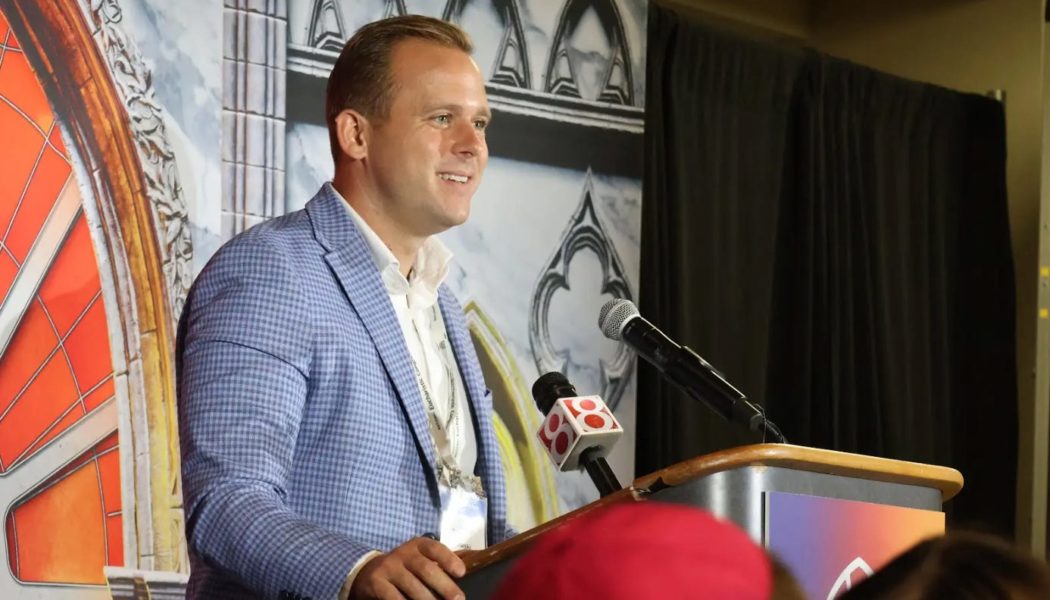
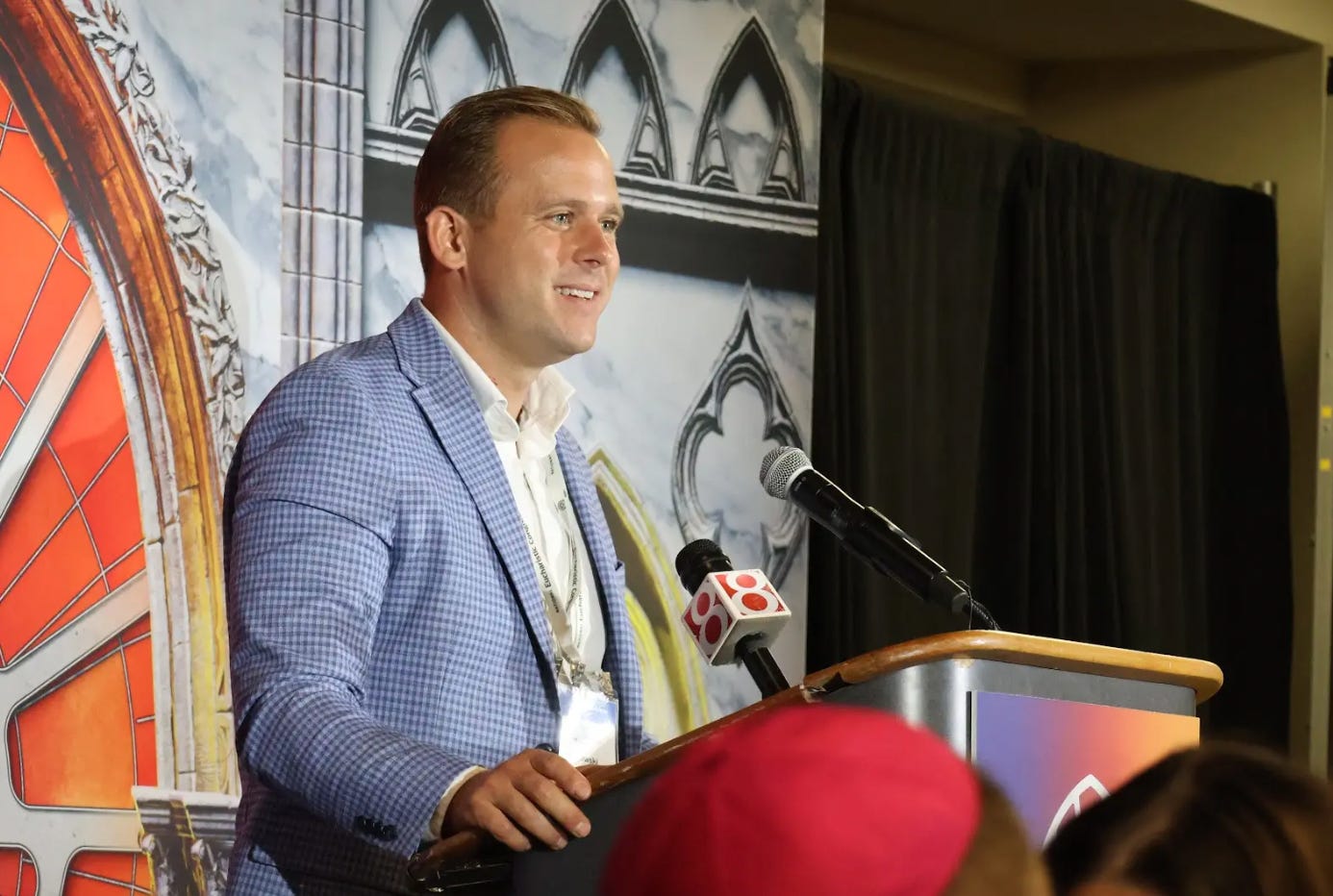
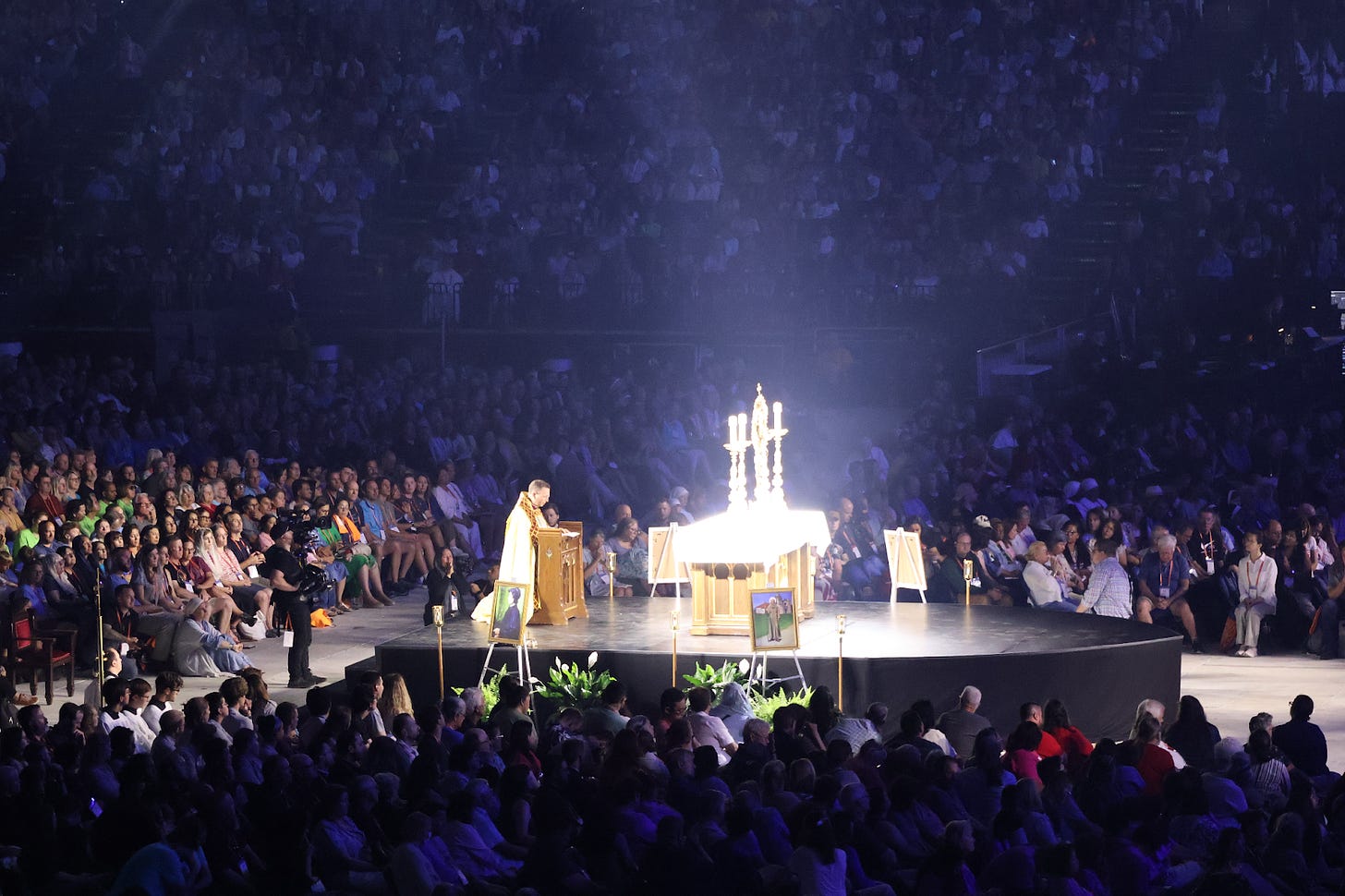
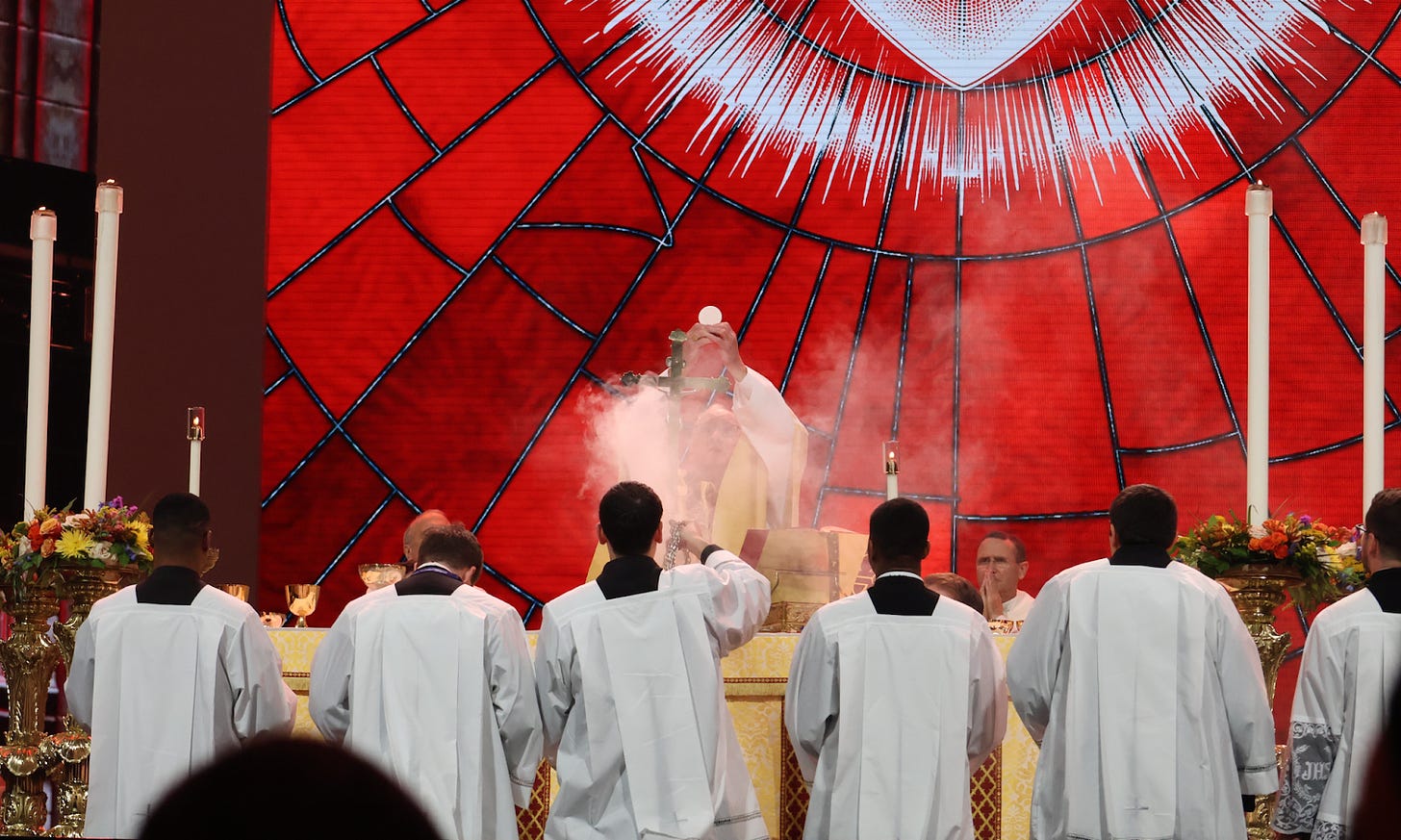
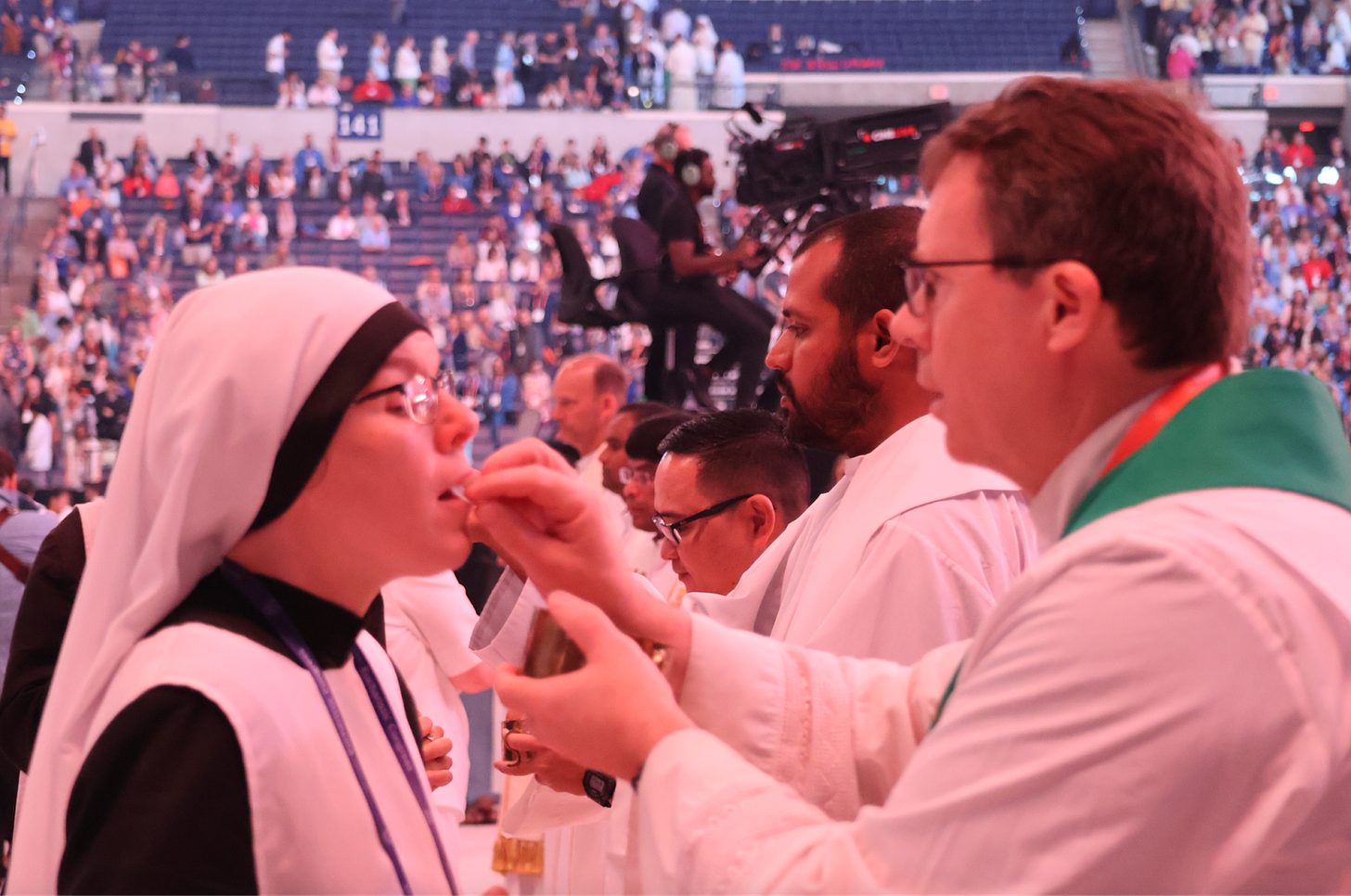

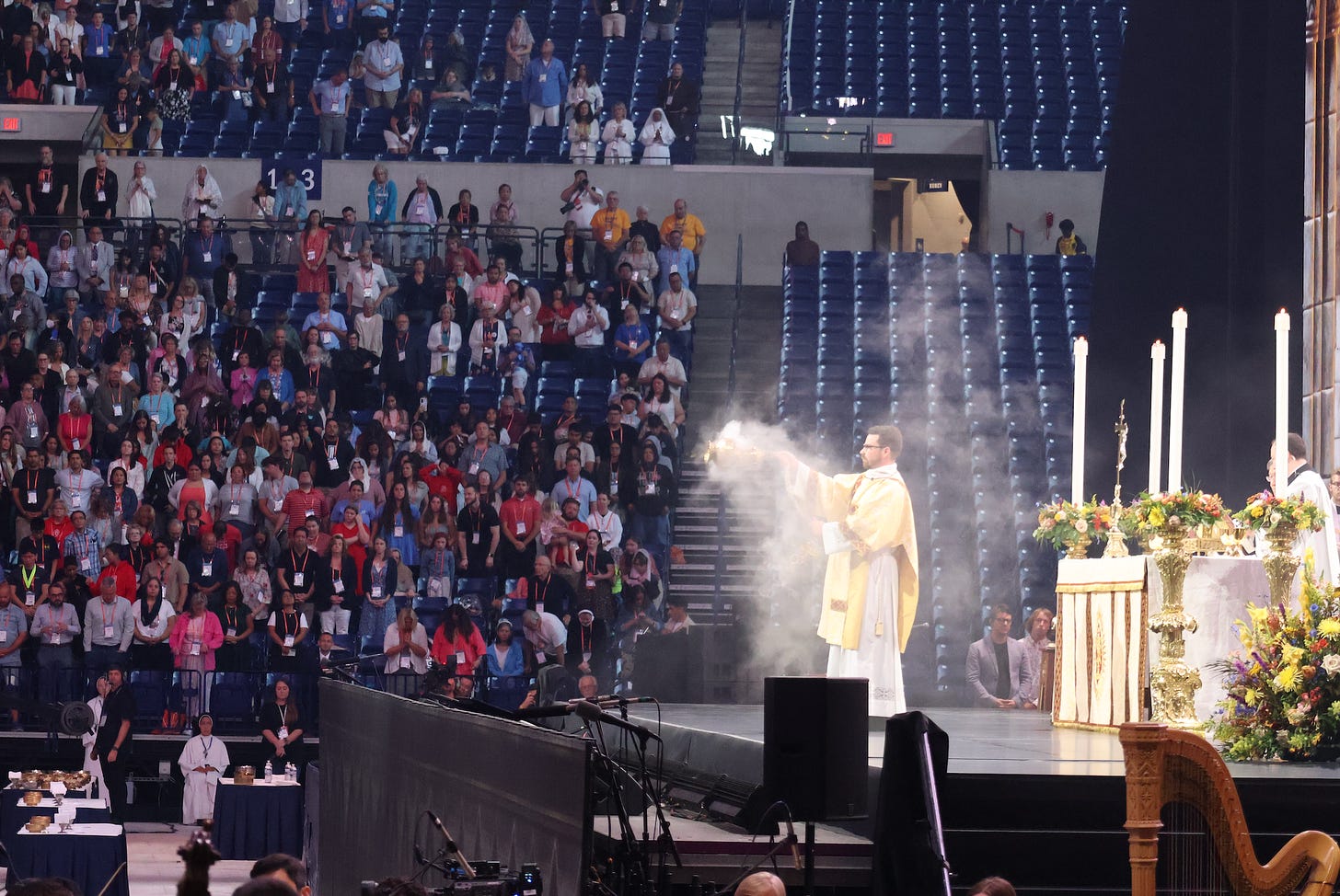
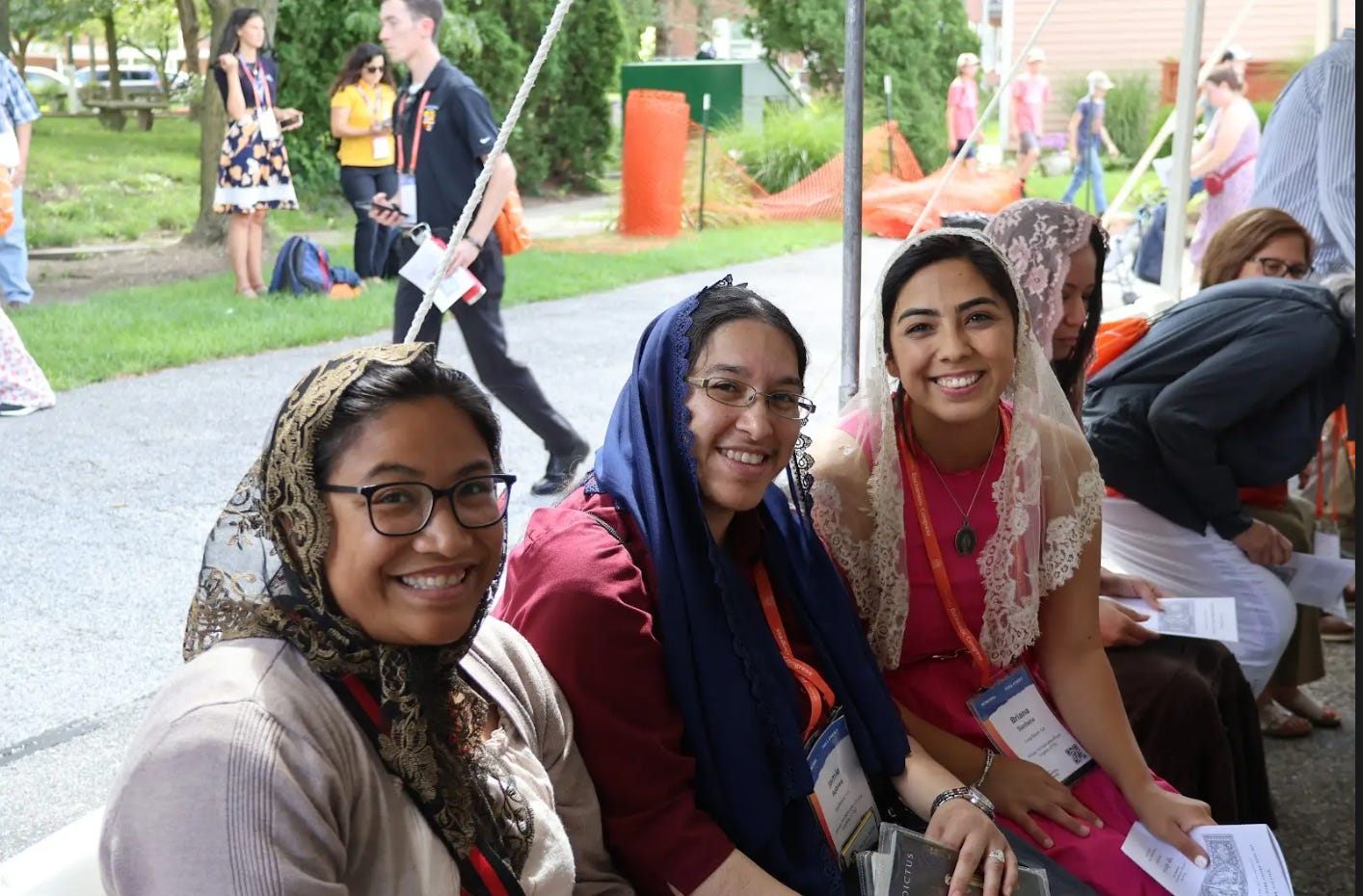
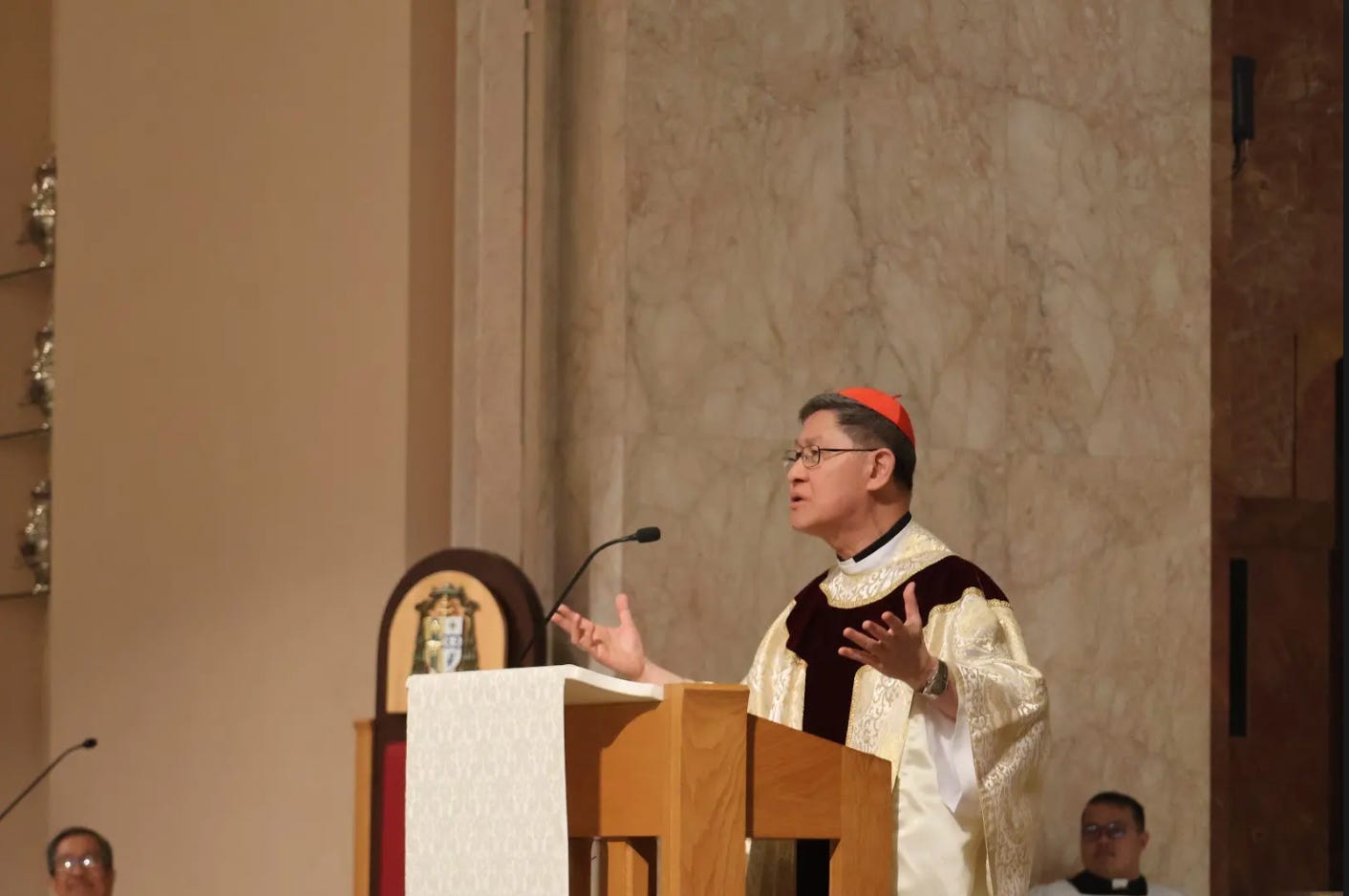
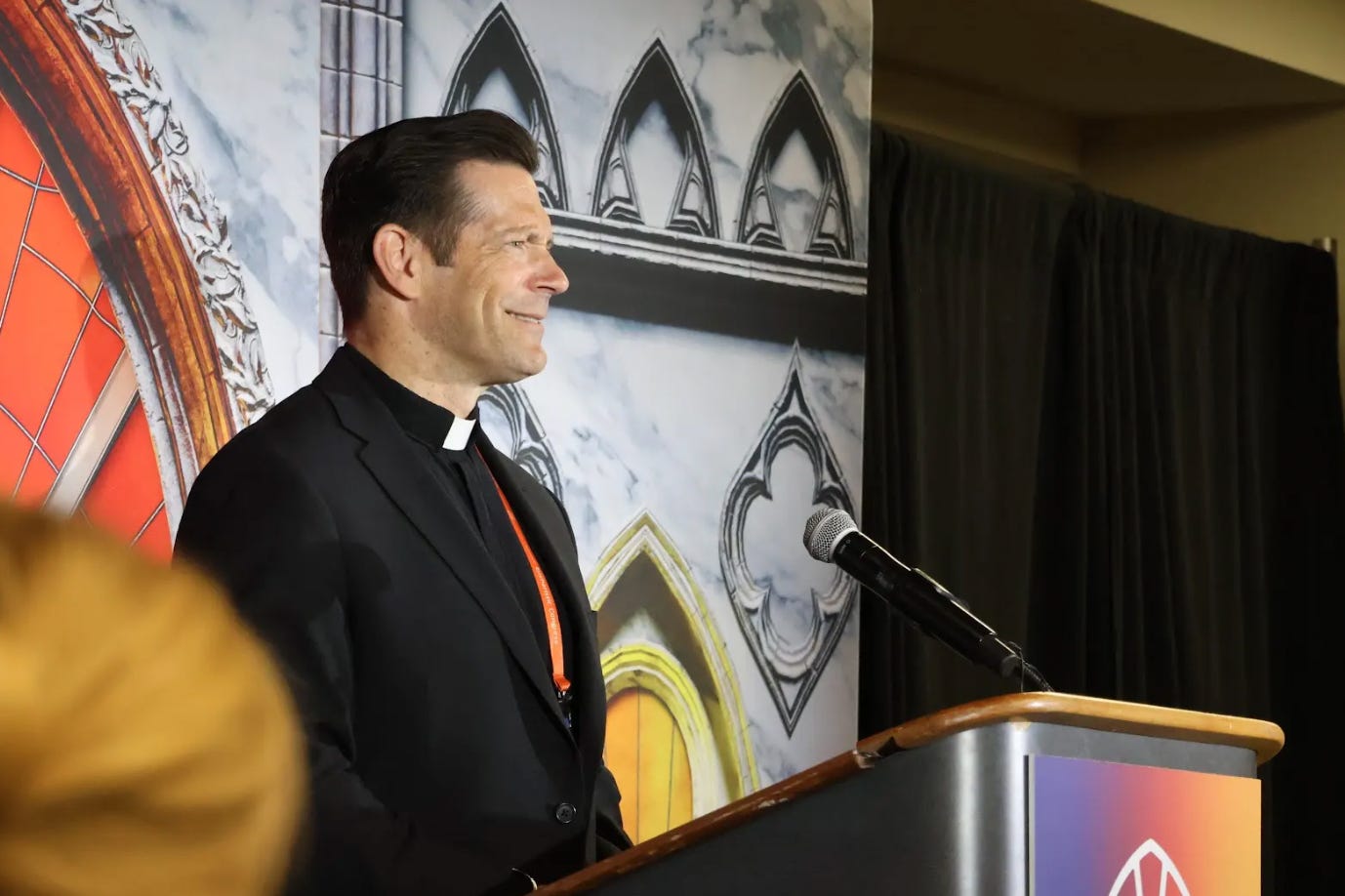
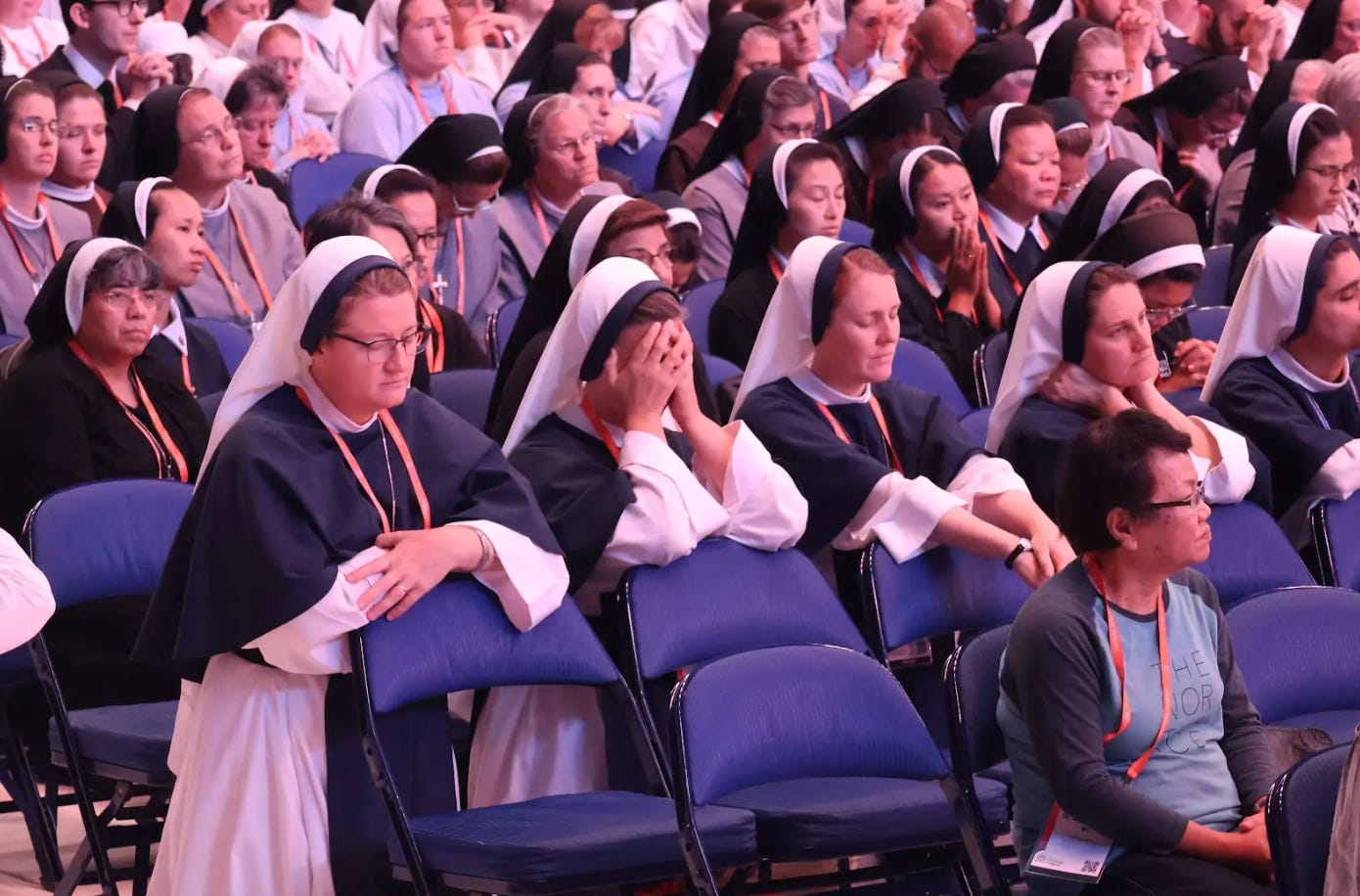

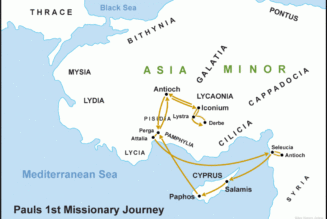
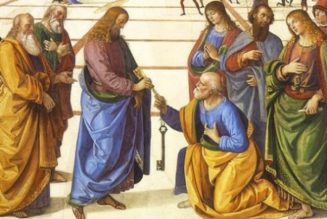
![Following UK Prime Minister Boris Johnson’s Catholic wedding, the task of announcing new Anglican bishops will fall to someone else [London Times paywall]…](https://salvationprosperity.net/wp-content/uploads/2021/06/following-uk-prime-minister-boris-johnsons-catholic-wedding-the-task-of-announcing-new-anglican-bishops-will-fall-to-someone-else-london-times-paywall-scaled-327x219.jpg)




